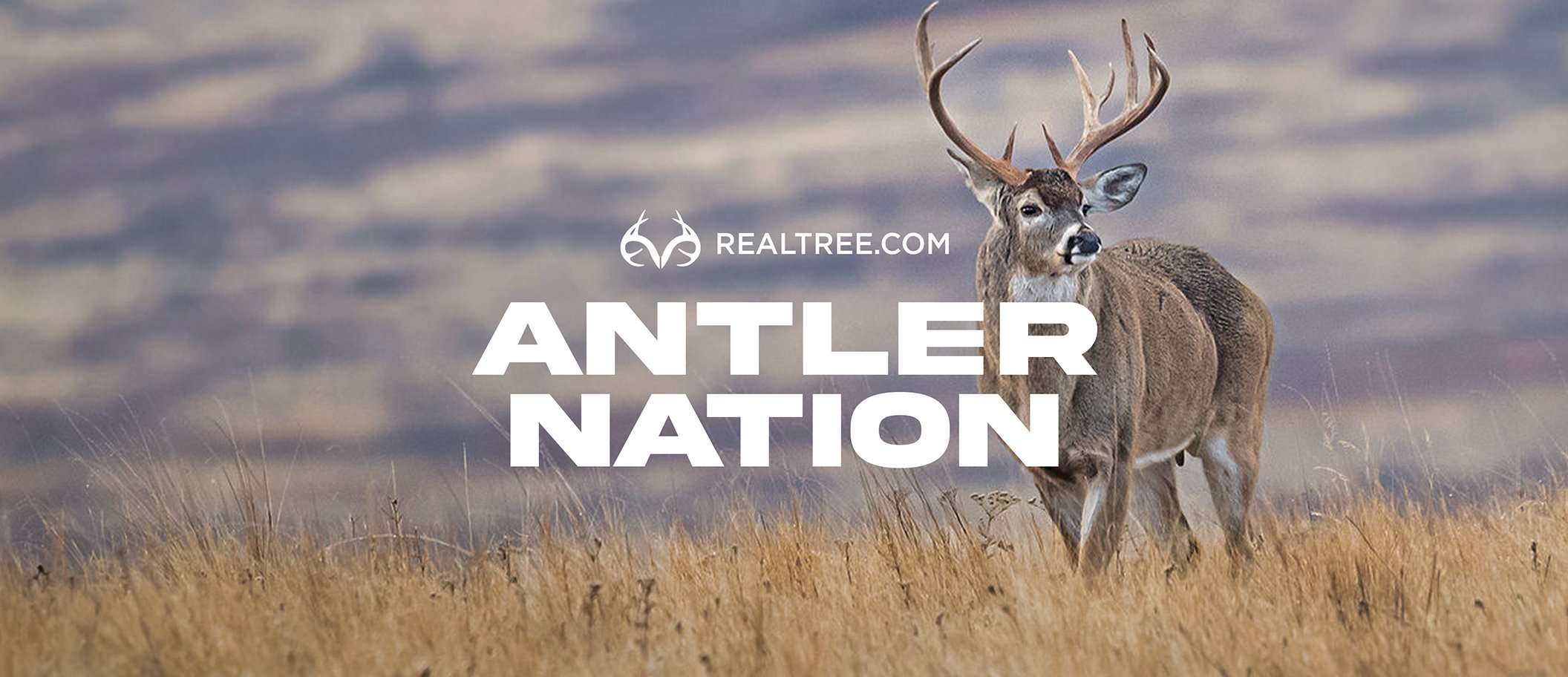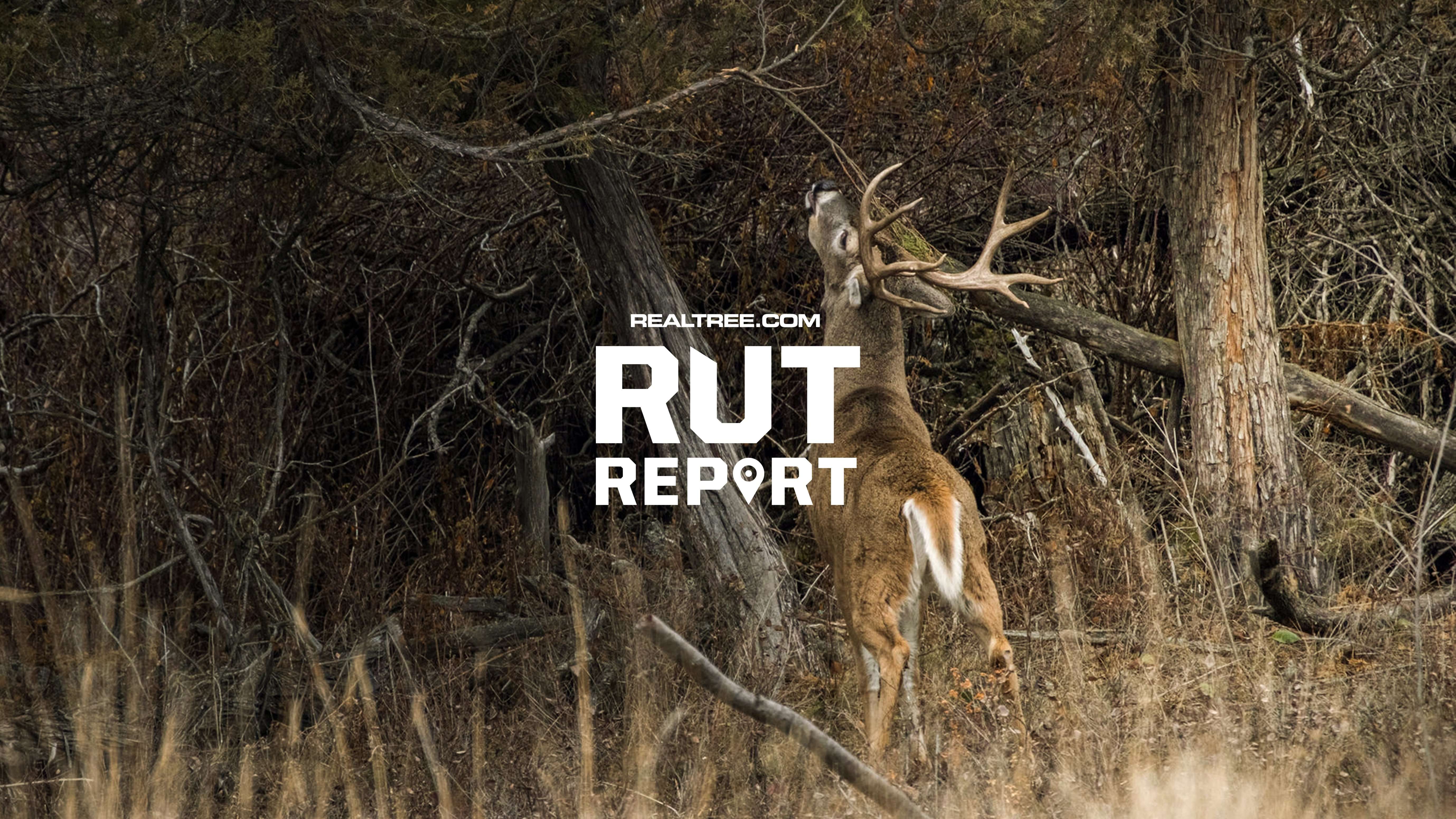Our annual look at rut data, moon phases, and the tactics you need to know before picking your deer hunting vacation days this season

Don’t sleep on these dates. Choose your vacation time wisely and wrap your tag around a big buck’s antler this fall. (Photo by Tom Tietz)
Our mantra here at Realtree is: A good day to deer hunt is any day you can get off work! But knowing that some days and weeks will be better than others, we flipped through the calendar, analyzed moon phases and referenced historical rut patterns to predict when the very best days will be this season. Plan your hunting vacation to include some or all of these days, and you’ll be in the best position possible to kill a big buck.
THE BOW OPENER
Whether your state’s archery season opens in September or around October 1 is academic. The first three or four days of early bow season are second only to peak rut for the best odds of seeing and shooting a big deer. Bucks have not been pressured for eight or nine months, so they’re not perpetually wired like they will be later on. Throughout September and into early October, they continue to hang in small summer home ranges (200 to 400 acres according to many scientific studies), and they walk fairly predictable patterns from loafing cover to food sources.
Best conditions: In the early season, you’ll see the best and most predictable deer movement in the afternoons. In most places it will be warm to very hot, but if you’re lucky and get a few cool, low-humidity evenings, like we had last bow season here in Virginia and in some other states, hit the woods and be on stand no later than 3 p.m., ready to hang tough for four hours and take advantage of a small but noticeable increase in deer activity. Evenings with light rain are great if the humidity is not too high.
Good stand: Hang your first tree stand of the year hard on the edge of alfalfa, soybeans, clover, or corn where you’ve scouted and spotted a mature buck coming out of the thick, green woods to feed, whether with a binocular from afar or from a trail camera positioned close by. By posting first from an edge and not too far back in the cover, you do not contaminate a buck’s core area and disrupt his pattern with human scent or noise.
Don’t Miss: Find a Big Buck in July With These Trail Cam Tips
Go-to tactic: On sultry evenings a few weeks before the bow opener, drive to your hunting land two hours before dusk and, from a hidden vantage, glass for deer coming to feed in alfalfa, beans or clover. Camera images are great, but I want to put eyes on a velvet shooter whenever I can. No crops where you hunt? No worries. On one of my best Virginia farms, I glass many velvet bucks in pastures. After those fields are hayed for the last time in late summer, deer visit them frequently to feed on green forbs that pop up, especially after a light rain.
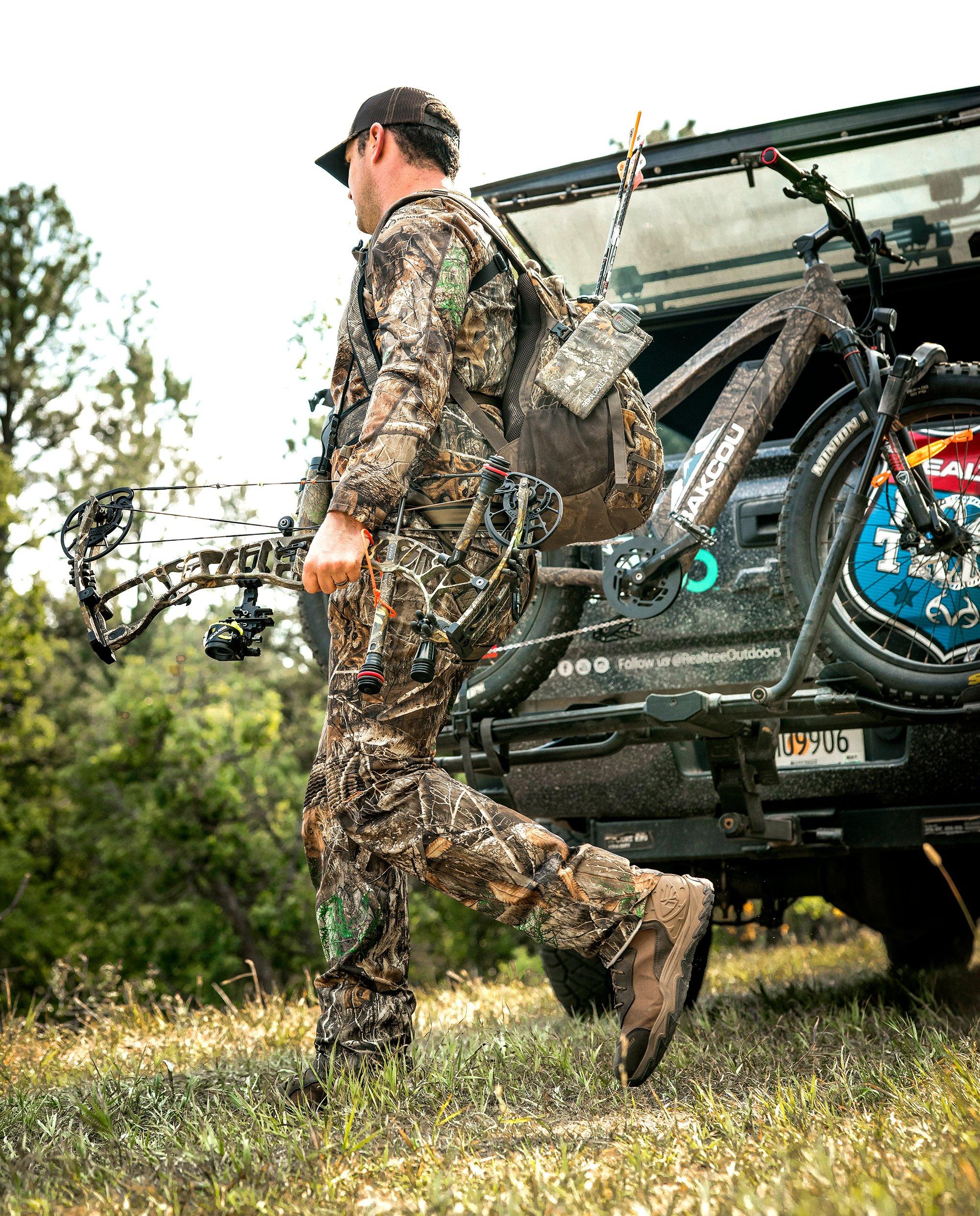
The first three or four days of early bow season offer your best opportunity at seeing and shooting a big buck outside of the rut because they haven’t experienced hunting pressure for eight or nine months. (Realtree Photo)
OCTOBER 16-20
Minnesota bowhunter Scott O’Konek ran his climber up a tree in the dark on the morning of October 16, several years ago, and he waited. Soon after daybreak, a jittery doe crossed in front of his stand with a huge buck on her heels. Scott fired a perfect arrow as the buck quartered away at 40 yards. The 32-pointer with massive brow tines net-scored 227 3/8.
As the days and weeks pass in October, mature bucks get more and more rut-antsy, and their activity level rises. Historical rut patterns assembled by scientists for the northern two-thirds of North America reveal that 5 to 7 percent of a herd’s does are bred in the middle of October. That’s not many, but for the hard-core bowhunter, good things can happen when bucks move for the first estrus does. Just ask Scott O’Konek.
We predict similar big-buck magic will happen for some lucky bowhunters who are bold enough to take their vacay during the mid-October “mini-rut” this season. On October 17, the “Super Hunter’s Moon” waxes to full. The biggest super moon of the year will be visible and bright for most of the night, rising around dusk and setting at dawn. This should kick some adult does into early estrus, and antsy bucks will get after them. Bowhunters who are in the right place at the right time during this big-moon might score big.
Best conditions: It’s a pleasure to sit a stand on warm, still, Indian summer days, but October thermals are tricky then, rising and swirling in the mornings and falling as the ground cools in the afternoons. Cool days when the wind blows gently and steadily at 8 to 12 mph are better for taming those thermals. Play the horizontal wind at your stand, and the vertical thermals won’t be a problem. With the moon big and bright, anticipate flurries of deer movement at midday. Further, research shows that under a full moon, deer tend to be move earlier in the afternoons, so be on stand and ready for that.
Good stand: Look for a narrow, mostly linear strip of brushy woods that connects a crop field with another grain field or hay pasture. Think of the fields as ends of an hourglass, and the woods as the narrow stem that connects them. Hang a stand in the woods strip where you can look up and see a big deer coming for maybe 75 yards. Such a pinch point makes for a good sit morning or evening.
Go-to tactic: October 18, give or take a few days, is the unofficial start of the heaviest buck scraping phase of fall. Play off that and build a big, stinky mock scrape near your stand. Each day that you come back to hunt, sneak over and freshen the fake scrape with both tarsal and estrus scent. Create an early rutting ruse in hopes of luring a buck.
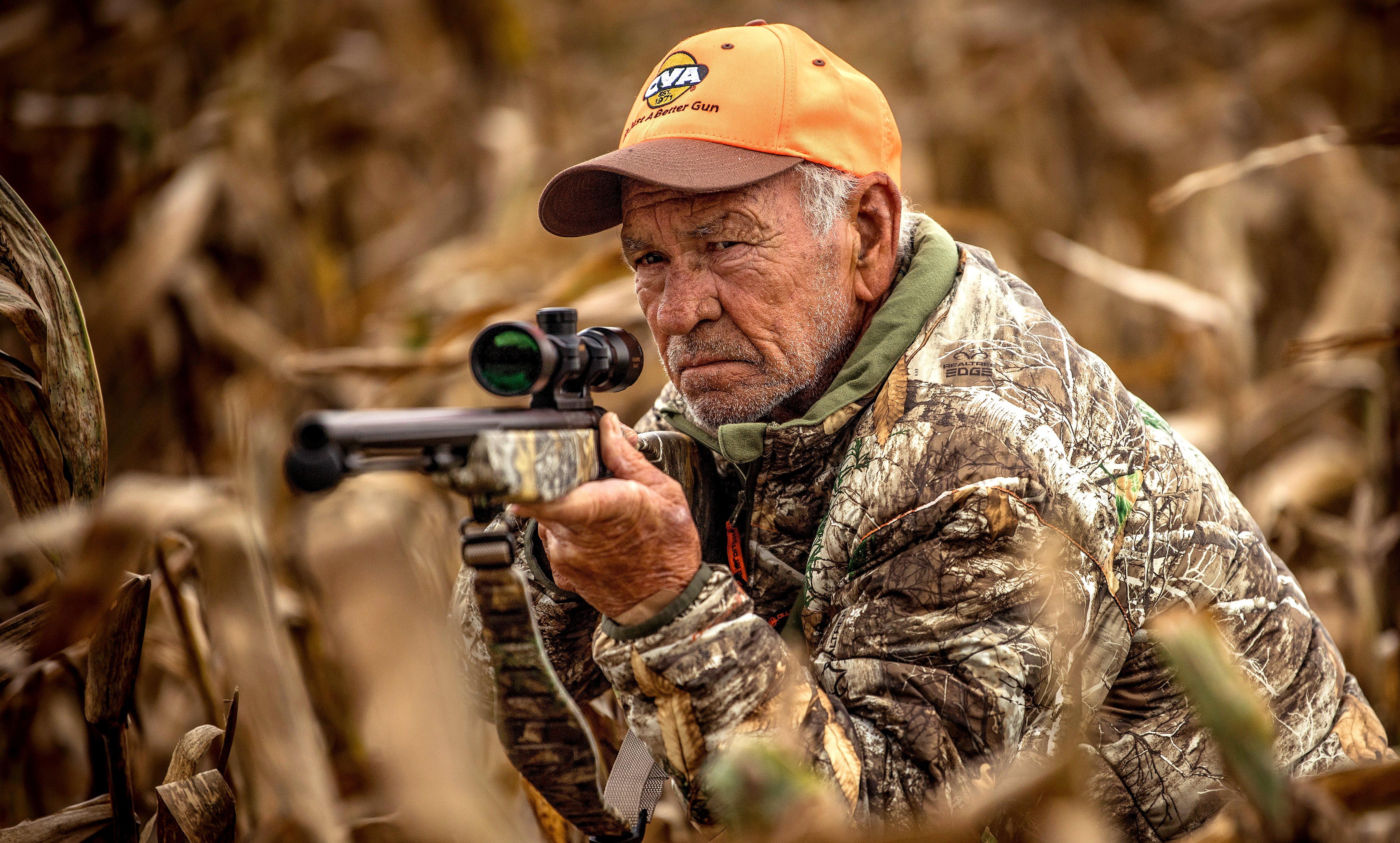
Get to your stand early during the first days of November and stay on high alert from daylight until 8:30 or so when the deer are most likely to be on the move. (Photo by Bill Konway)
NOVEMBER 2-6
Whitetails are crepuscular, which simply means they are most active at dawn and dusk, regardless of month, weather, or other environmental factors. In all my years of chasing deer across North America, I’ve noticed this tendency for the animals to move most in twilight is magnified during a new (dark) moon that overlaps the seeking phase of the rut, as it does this year.
The moon will go black on November 2 and stay on the dark side as it waxes crescent through to November 7. During this window, I expect deer to be especially active at dawn and for an hour or so thereafter. A study out of NC State backs me up. Tracking GPS-collared deer, researchers saw a large peak of movement at daylight during the new moon, and noticeably less activity the rest of the day.
I love hunting mornings during the first days of November, when bucks scrape, rub, and prowl hard for does on the verge of estrus. That’s the official kick-off of the rut for me. I hunt the timber, on rub-blazed ridges and in funnels with multiple scrapes.
If you’re a morning timber hunter too, and especially if you live and hunt in the Midwest, this could be your week. If you do take off, get on stand early in the predawn and be especially keen from daylight until 8:30 a.m. or so.
Don’t Miss: Is There Really a Perfect Round for Whitetails?
Best conditions: Hope for chilly weather in the 30s or low 40s (light frost in the bottoms is heavenly), high-pressure, and a light north or west wind. If you’re lucky and those conditions come together, you’ll see and hear deer rutting all over the timber.
Good stand: Find a small clearing in the woods, some 70 to 120 yards back off a field of alfalfa, beans, or clover. It might be an old log landing, strip of abandoned log road, grassy glade…you get the idea. Slip in and set a tree stand on the downwind edge of the opening. As the rut approaches, many deer will move off the fields at first light and gather in these clearings to posture and sniff each other before heading deeper into the woods to a bedding area. Some bucks spar while others push does around. Be there for the show and ready for a shot.
Go-to tactic: Say you’re on stand one morning and spot a shooter cruising down a ridge or creek bottom 120 yards away. When your hunt is over, sneak over to where you saw the buck and check it out. If you find a cover edge, or better yet, a doe trail littered with fresh rubs and scrapes, I can almost guarantee that the buck will cruise back through there, maybe later that afternoon, or tomorrow morning or on the third day as he makes his seeking rounds for does. Move in tight to the edge or trail, hang a stand (a climber works great for a quick ambush) and wait for your shot when and if the buck trolls back through.
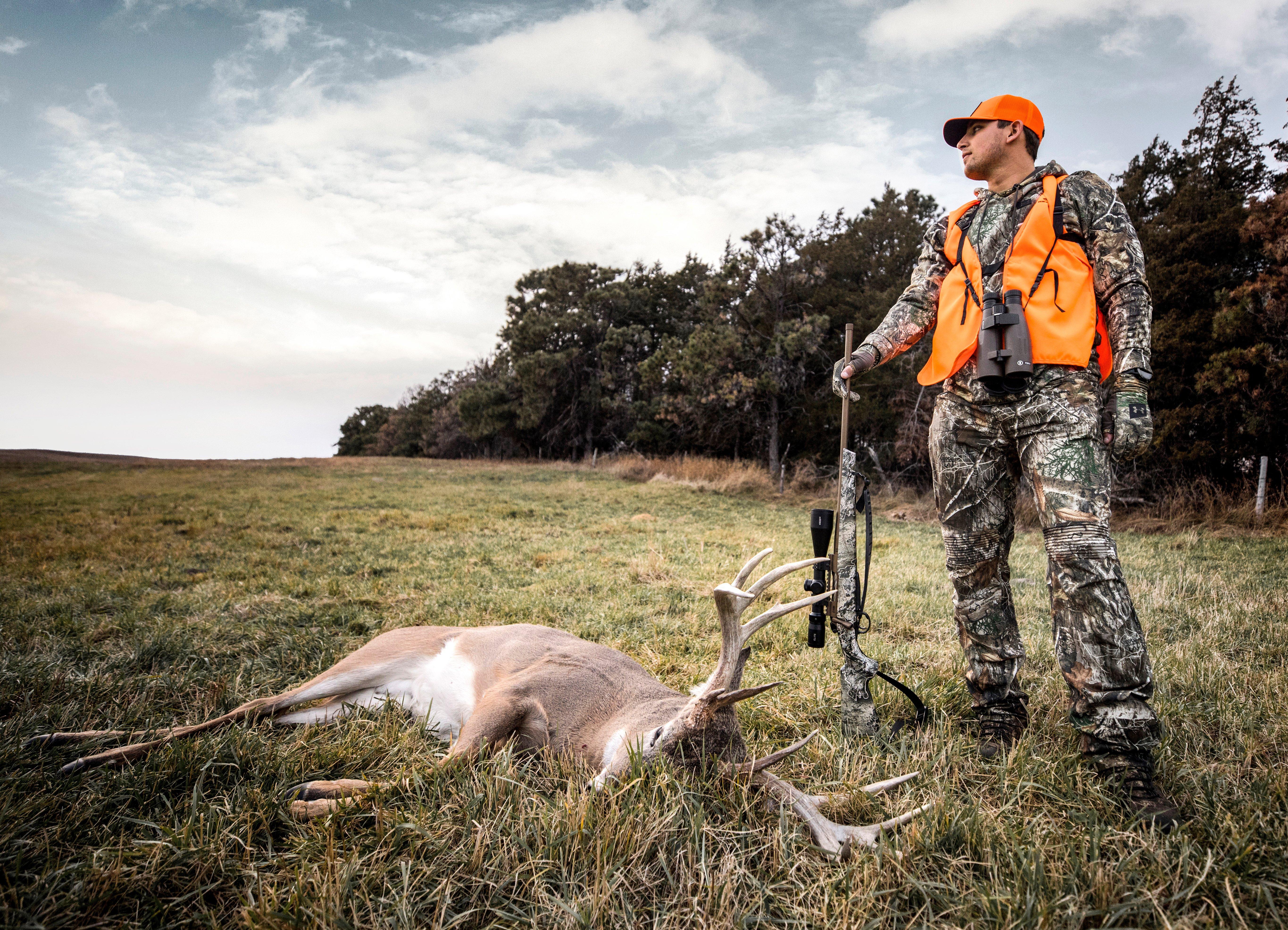
The moon will wax to full on November 15, which will cause the bucks to become ore active around 11 a.m. until dark each day. (Photo provided by Realtree)
NOVEMBER 13-18
Newsflash: If I had only five days to hunt this fall, this would be the week!
The late, great Charlie Alsheimer was a whitetail expert who had an uncanny knack for analyzing the lunar phases and predicting the best time to hunt the rut each year. When the rutting moon waxes to full smack in the middle of November, Alsheimer believed you’ll see intense doe and buck movement, and a later rut that is “going to be great!” I followed Charlie’s predictions for years, and have used them to my advantage to kill some giant bucks across North America.
With the moon waxing to full this November 15, the stars are aligning for all of us who live and hunt in the northern two-thirds of America. In the Midwest, many bucks that have already bred some does will come out of lockdown and be seeking again. In states like Virginia, Montana, New York, and others where the peak rut typically occurs later around November 15-20, the rut should be smashing.
Best conditions: Ditto like we said for early November, hope for cool to cold weather, high-pressure, frost or maybe even snow, and a light north or west wind. Embrace that big moon, and look for bucks moving from around 11 a.m. until dark each day.
Good stand: In mid-November, having been hassled by bucks for weeks, many does sneak out into CRP fields, cedar ditches, and other out-of-the-way spots where the boys cannot so easily chase them. Also, a mature buck knows when a doe is on the verge of standing for him. He’ll herd her out in the same type of cover, pin her down and stand guard for a day or so, until he finally gets his way with her.
With all that in mind, set a gun stand to overlook a CRP field or similar weedy habitat where you can glass 100 yards or farther for a pair of breeding deer, or a loner buck prowling for a doe. If bowhunting, set up to watch a heavily used trail that comes out of the woods to the weeds, or post on a nearby fence line, gate gap or similar funnel.
Go-to tactic: A mature buck utters low, guttural tending grunts as he follows a doe, or while cruising alone in search of one. On your tube, blow loud, deep choppy grunts (urrppp, urrppp, urrppp) every 30 minutes or so while on stand in hopes of striking a rut-crazed buck and bringing him over. And by all means, grunt at every buck you see walking out of shooting range.
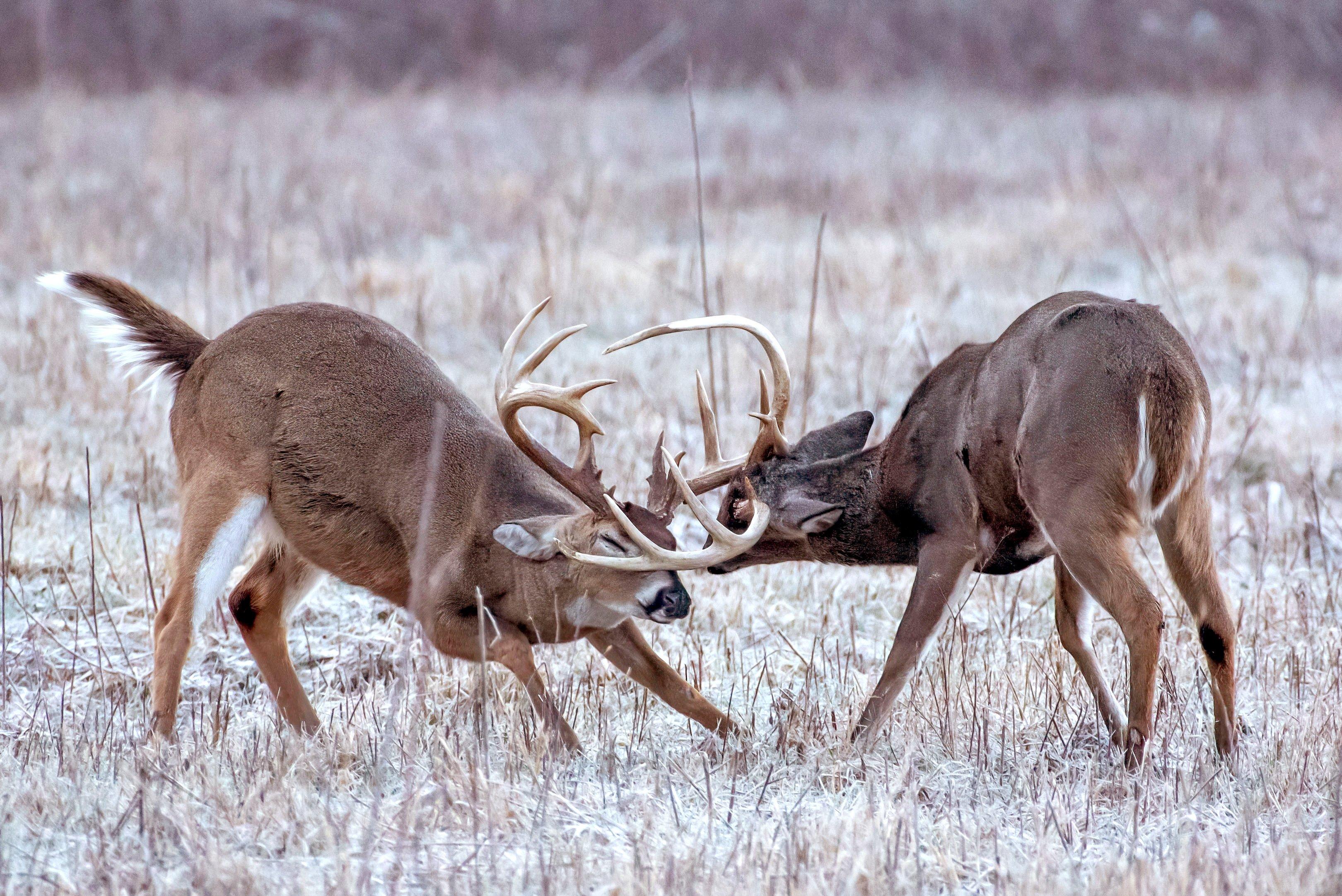
The peak rut should be taking off in states like Virginia, Montana and New York around November 15-20. Hope for cool to cold weather and choose your stand location wisely. (Photo by Christopher J. Barger)
NOVEMBER 30-DECEMBER 4
I cannot say this enough: Even though the primary rut is winding down come Thanksgiving, many more mature bucks than most hunters realize still cruise the woods into early December, hoping to hook up with one of the last hot does of the season. If you’ve been neglecting to hunt the first days of the post-rut, you’ve been messing up.
If you’ve got some vacay left, I urge you to give it a go this season. If you do, remember one main thing: Hunting is almost always best in the afternoons. Does gather back on whatever food sources are left, and surviving bucks, skinny and run down from the main rut, will come to check the girls one last time, stopping here and there to grab a bite toward dusk.
Don’t Miss: 6 Of The Biggest Road-Killed Bucks of All Time
Best conditions: The colder the weather, the better. The dark moon on December 1 will enhance the deer movement at dusk and dawn, though the mornings will still be tough. As a bonus, it’s midweek, so hunting pressure will be light to nonexistent, even on public ground.
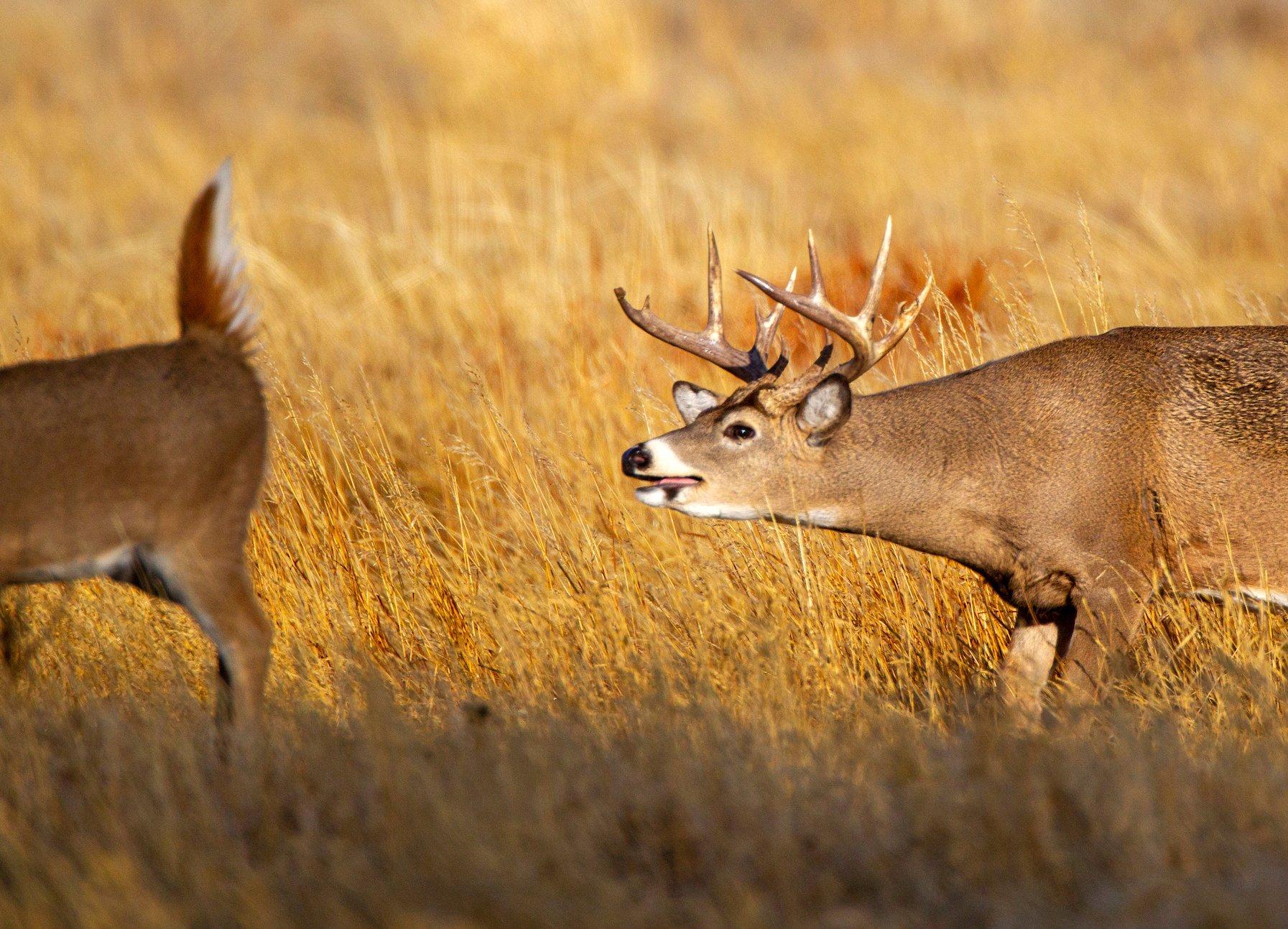
During the first few days of the post rut, hunting is almost always best in the afternoons when bucks cruise the food sources in search of the last few hot does of the season. (Photo by Russell Graves)
Good stand: One early-December evening in Iowa, I hunted over a tiny patch of standing soybeans on the edge of a huge cut bean field. I saw 10 deer, including a 170-class titan that stayed 170 yards out, too far for my slug gun. Oh well, a while later I shot a 150-inch 10-pointer as he stuck his head into the only pocket of beans left for five miles. Find the last scraps of feed, whatever that may be, and watch it. If it’s legal to bait in your state, do it. In many situations, a ground blind is better than a tree stand.
Go-to tactic: Did you know estrus scent can work better in the post-rut than the primary? Think about it. During the peak, the scent of many estrous does is all over the woods. But in early December, when there are fewer receptive does out there, the sweet scent of one might bring a buck running. Lay a doe-in-heat trail into your late-season stands, and hang a couple wicks nearby to float more lure in the woods and cover your scent.




